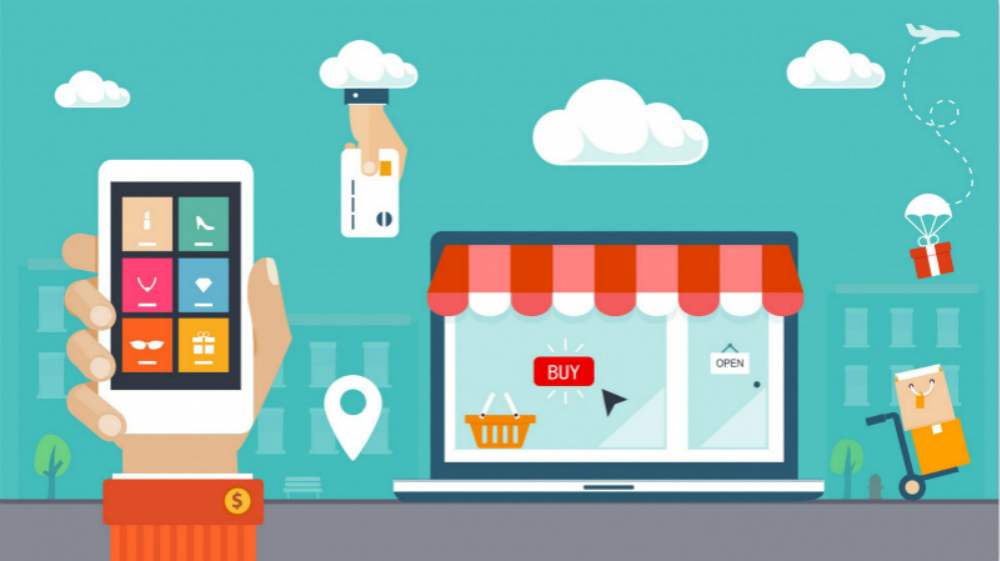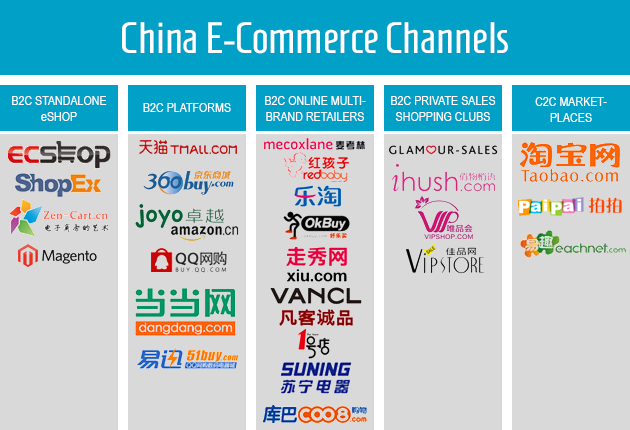How To Sell Your Products Through Cross-Border E-Commerce in China
The growing demands for foreign brands and goods in China have highly contributed to the rapid development of cross-border e-commerce. And, the fast-growing market of cross border e-commerce is also innovating numerous opportunities for businesses and brands worldwide with new accessible channels. With the availability of various platform there remain advantages and disadvantages to each and the suitability for different types of business. In this chapter of the cross-border e-commerce in China, the information will provide you with an in-depth analysis of each channels and criteria.
Introduction To Online Sales Channels
Previously for purchasing foreign products, the price differentials between China and other countries were approximately peaked at 80% little before a decade ago to 20%-30% presently. Later in the years, consumers in China have resorted to “daigou” (代购) where residents in foreign countries merchandise products to consumers in China for a lower price than merchandisers in China, then shipped out as a personal package. This e-commerce system does not allot protection for consumers, as Daigou can be potentially selling fakes or scams. Fast forwarding to 2018, with the revised tariff and regulation system, businesses have multiple options readily available to import goods to consumers without the burden of having a physical location and the expenses for manual sales labor. For this reason, many international brands to shut down physical stores and focus on e-commerce.

Sales Channels Available
Sales channels are marketplaces for brands to merchandise their goods and products on at a fixed charge, varying from channels to channels. There are currently six sales channels to deliver foreign goods to consumers in China, each with varying conditions. Stand-alone, online malls, hypermarkets, vertical specialty marketplaces, flash sales sites, and WeChat store.

Stand-Alone Website
Stand-alone e-commerce is a web shop privately owned by the brand themselves, merchandising their own products. International brands can directly merchandise foreign goods to China using their own system without paying for additional fees to any hosts. For example, internationally luxurious brands such as Bulgari, or well-known brands such as Nike have their own stand-alone web shop hosted by themselves. However, the success rate for foreign stand-alone can be seemingly low, unless it is a reputable brand. Additionally, foreign brands must compete against dominant marketplaces in China in search engines, social and more, making it costly. Brands also must create their own line of work for purchases, refund, customer services, payment methods, and more, specified to serve Chinese consumers in their time zone.
Pros:
- Sole property of the brand
- Ranges of catalogue and website customizations
- Direct communication with consumers
- Access to all data received
Cons:
- Requires a developed systematic line of work/CRM for purchase, refund, customer service
- Competing with other e-commerce platforms, e-commerce brands in China
- May experience higher level of difficulty in reaching out to Chinese consumers
- Marketing may be more costly
- Highly suitable for domestic brands and reputable brands (e.g., Nike, Gucci)
Online Malls
Online malls are large and well-known e-commerce platforms where users and search for independently operated shops by brands, essentially virtually shopping within a mall that co-exists with thousands of brands. The system allows centralizes brands within the mall, allowing consumers to purchase goods from the brand directly with a secure and standardized transaction process imbedded by the platform. The typical business model for online malls can be C2C or B2C. Some of the largest platforms include Tmall Global and JD Worldwide.

Pros:
- Access to billions of users
- Product catalogue are easily accessible to all consumers on the e-commerce platform
- Ease of product browsing
- Developed CRM system through the platform
- Standardized transaction process
- Various Chinese media buying opportunities
Cons:
- Competing with thousands of brands in one single platform
- May experience an extended and tedious registration procedure
- Platform charges a percentage based on product/sale (various between 0.5% – 15% based on different platforms), annual fees and deposit fees
- Mandatory promotions and very competitive pricing
Hypermarkets
Hypermarkets are platforms where foreign brands oversea can merchandise their products to the platform in a large bulk, where the platform later adds and categories these products into their own catalogue. Hypermarkets follow the business model of B2B2C, where the goods are delivered to the platform in bulks by the brands, later delivered to the consumers by the platform. Hypermarket purchases products from brands at a wholesale price and increases prices to designated retail prices on the platform. Hypermarkets such as Kaola import a wide range of products into their platform while having only one catalogue rather than numerous independent shops in one platform. However, hypermarkets tend to import popular categories to avoid the risks of non-selling products and overstock.

Pros:
- Products are curated in large amount by the platform
- Great platform to merchandise products to millions of users
- Suitable for wholesale brands
Cons:
- Competing with other highly popular selling products
- Platforms only curate highly popular products
- Specific platforms may curate focused categories (e.g., JD concentrates on wine, watches, handbags and others from foreign supplies)
- All products are merchandised under the platform and brand building may be more difficult
Vertical Specialty Marketplaces
Vertical specialty marketplaces are similar to the model of hypermarkets, but specialty marketplaces focus on niche categories. The specialty marketplaces operate based on B2B2C, by purchasing large amount of goods from foreign supplies and brands. Despite the lower impressions on niche products, the conversion rates are typically much higher as these goods target specific interests of audiences.
Pros:
- Suitable for brands with niche categories
- Higher conversion rates than online malls as consumers shopping in these platforms are specifically searching for niche products
- Platforms purchase in high numbers from brands
Cons:
- Do not have creative opportunities to customize individual webstore
- Traffic is lower
- Catalogue is limited
- May experience difficulties in receiving opportunities to be merchandise on these platforms depending on the products by the brand
Flash Sale Sites
Flash sale type websites sell limited numbers of new products coming into or in the current market at a deducted rate for limited time only. These type of platform targets consumers whom consistently hunt for new products, and targets brand to output their products in the Chinese market in small amount to test the potential within the market before expanding its horizons. Flash sale platforms are also an effective strategy to bring attention to a product and brand rapidly without full commitment.
Pros:
- High volume of consumers
- Great platform for start-up brands to test the market
- Wide range of categories
- Small production numbers
Cons:
- Product pricing are highly reduced
- Brands may or may not experience an underproduction of new products
- Limited time sales
- Not suitable platform to continuously expand the brand with
WeChat Store
WeChat is an social messaging tool launched in 201 by Tencent. Apart from the functions to messaging and feeds, WeChat also have the function to proceed transactions and shop. WeChat pay have become one most frequently used payment method aside from Alipay. Merchants with verified accounts are also given access to open an in-app store on WeChat, which is also available to foreign businesses, and pay directly using the payment system from WeChat itself. Additionally, WeChat store provides merchants with more opportunities for creativity, sales, customer services, and CRM (customer relationship management) with the existing system. Technically, foreign merchants can operate their WeChat store independently, but it is highly recommended to partner with third-party service provider to assist in registration, design, and daily operations.

Pros:
- Access to billions of consumers on WeChat
- Developed CRM system for customer services and leads generation
- Direct browsing for consumers within the app
- Many marketing and creative opportunities
- Integrated WeChat payment method
- Internal buzz to all subscribers (similar to email marketing)
Cons:
- Registration of Official account may require assistance
- Registration fees, monthly fees, deposit, commission fees
- Not as widely used by Chinese consumers in comparison to online malls

There are hundreds of channels to merchandise products to Chinese consumers from oversea, it is important to research into different platforms to analyze the advantages and disadvantages of each platform to find the most suitable channel based on the brand’s image, goals, catalogue and other factors to maximize the value of the channels, and reach the specific target audiences.

 A Complete Guide to Cross-border E-commerce in China
A Complete Guide to Cross-border E-commerce in China



